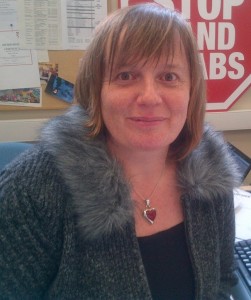Holistic health or wholistic health?
by Stephen Duncan MSc
Managing Director, Balanced Fitness Ltd
Most of us want to lose weight. That is a given even for the majority of people who don’t even regularly exercise. However we are all different – so we all work differently. This means some people who want to lose weight may also have constant headaches, back pain and struggle to get a good night’s sleep. It would be quite common to find that same person also has bloating and irregular bowel movements. Some others will also want to lose weight but have a chronic medical condition such as diabetes or arthritis. The question then becomes should we all exercise and eat in the same way to lose weight?
Henry Ford (1863-1947), American founder of the Ford Motor Company.
So eating less and exercising more, looking at the examples above, may not be the answer for everyone. You need to look at the whole person. Back pain will affect the choice of exercise and even the fun in exercising. Digestive problems can impact on how the muscles of the midsection function, the core muscles.
Food allergies can lead to the nerves surrounding the digestive system to basically switch off the deep stomach muscles – the result: bloating and a distended tummy. So instead of exercising endlessly to burn fat off your stomach, this “pooch belly”, your health could be improved by finding out if some of the food you eat every single day is creating a kind of ‘two steps forward one step back’ approach to your exercise and diet plan.
Even those with medical conditions will typically follow the long held view of weight loss — just cut calories and exercise more. However, here again the subtleties of the condition need to be considered. If you have arthritis, the exercises need to be carefully selected and the intensity and effort you put in to your workouts managed. This means the basic arithmetic of calories in versus calories out has to be shifted to the cutting calories side.Now, what if this person also has digestive issues? There have been many links researched between the function of your digestive system and the amount of inflammation in your body – arthritis is considered an autoimmune condition. In an autoimmune condition, the body in essence attacks itself and causes inflammation which leads to the breakdown of tissue in that area. Certain foods can increase inflammation in your digestive system and this can ultimately contribute to an increase in arthritic symptoms. So eating the wrong food leads to more inflammation and further reduces the ability to exercise. Those on calorie counting diets soon could have nothing left to cut if the inflammation gets bad enough from eating the wrong food!
Eating an anti-inflammatory diet, free from foods you are intolerant to, would be one major step towards losing fat and placing less emphasis on the need to cut calories or constantly upping the amount of exercise.Knowing more about the whole person will modify the program for weight loss. Different people can have the same symptoms but for different reasons. You can have digestive issues not just as a result of a food intolerance but from poor posture which alters how the digestive system functions and in turns processes or digests your foods. The digestive issue could also be caused by a response to stress or a digestive infection such as H.Pylori. Some figures indicate over 50% of the world’s population could be infected by this bacterium. It is the main cause of inflammation in the digestive system and in turn this effects protein digestion.
So if you start to look at your weight loss program as all about how to improve how you function as a whole person, taking in to account your hormones, immune system, detoxification and also digestive system, you will know the bigger picture. Maybe this time, finally, you will have the missing pieces to the jigsaw that is you, helping explain why cutting calories and exercising more was merely helping you contribute to the same repeating cycle of failure and worsening condition.
There are people who study the field of nutrition and use lab tests aimed at getting to the bottom of how you function as a whole person. Finding out what is going on in the inside will provide the answers to why your weight loss program has yet to work for you. A more whole person approach makes for a more holistic weight loss program.
About the author: Stephen Duncan is an Executive Health Coach. He holds a BSc Hons degree in Developmental Biology and an MSc in Coaching Studies. A certified Advanced Metabolic Typing™ Advisor, Stephen is the Founder of Balanced Fitness and has 20 years in health & fitness.













 By John Knox
By John Knox
